Clarissa Tossin:
Installation view, Clarissa Tossin: Falling from Earth, Museum of Contemporary Art Denver, June 3, 2022–August 26, 2022. Photo by Wes Magyar.
Clarissa Tossin:
Miranda Lash, MCA Denver Ellen Bruss Senior Curator
Clarissa Tossin’s MCA Denver solo museum exhibition presents recent and newly commissioned artworks that explore the causes and effects of rising temperatures on Earth and humankind’s rapidly evolving aspirations to explore territories on the Moon and Mars. Looking at our climate crisis through the lens of twenty-first-century Space exploration, Tossin draws connections between signs of environmental distress on our planet and the projected future of the Earth’s outer atmosphere and beyond.
Born in Porto Alegre, Brazil in 1973, Tossin has for more than a decade grappled with the geopolitical causes of climate change and the legacies of colonialism through her research-based practice and choice of sculptural materials such as Amazonian-native latex, synthetic rubber (silicone), recycled plastic, repurposed cardboard from Amazon delivery boxes and meteorite powder. For her MCA Denver presentation, Tossin compares histories of resource extraction on Earth with plans already in development by the United States government and private companies for future resource extraction on the Moon, which is projected to facilitate the colonization of Mars.
As the Space surrounding our planet becomes increasingly militarized, monetized, and filled by both functional and defunct orbiting objects, Tossin’s practice provides an invaluable window into understanding humanity’s approach to Space and how it will affect future generations. At a 2021 aerospace industry conference in Colorado, the NASA keynote address referred to Space (also known as “the High Frontier”), as “competitive, contested, and congested.” Tossin’s exhibition targets the major economic, political, and surveillance issues at stake in what current-day aerospace industry specialists are referring to as “the second golden age of space exploration.”
Clarissa Tossin’s concerns with the ramifications of the commercialization of Space is highlighted in the tryptic of jacquard tapestries entitled The 8th Continent, 2021. These large-scale tapestries repurpose images of the Moon taken by NASA to identify the locations of substantial ice deposits, articulated in these tapestries through glittering metallic gold thread. These ice deposits have the potential to be mined and used in the production of hydrogen rocket fuel in service of NASA’s planned Artemis mission to Mars. Tossin employs the grandeur of tapestries, a medium used since the medieval and Renaissance period to convey power and wealth, to articulate how NASA and private companies’ intent to instrumentalize the Moon, emulates centuries-long patterns of land extraction and colonization on Earth.
Her 2021 Future Geography weaving series combines strips of Amazon delivery boxes with NASA satellite images of the Shackleton Crater (the proposed site of the first US lunar ice mining facility), the Jezero Crater on Mars (where NASA’s Perseverance rover landed in 2021), and the Hyades Star Cluster, (one of the closest clusters of stars to our Sun), further drawing attention to private sector’s interest and investment in Space exploration. The suspended, double-sided circular weavings in A Queda do Céu (The Falling Sky), 2019 interlace satellite views of the 2019 fires in Amazônia and the Amazon River, along with NASA images from the Martian plain Amazonis Planitia, and the Milky Way in woven patterns resembling the geometric partitioning of land by agribusiness when viewed from space.
For Falling From Earth, Tossin developed several newly commissioned works that continue her explorations into how the acquisition of scientific knowledge can lead to the commercialization of natural resources in celestial bodies. In Valuable Element, 2022, Tossin’s simulation of moon dust, created by erasing sections of ink from images of the Moon, are shown next to a vial of real Moon dust and a Moon rock on loan from NASA, obtained during Apollo 11 mission, humankind’s first landing on the Moon. This lunar specimen is complemented by a Moon Rock obtained during Apollo 17’s mission to the Moon.
Another MCA Denver’s newly commissioned work, Vulnerably Human, 2022, is made of meteorite powder, tree bark and soil mixed with silicone for a skin-shed cast of an astronaut suit. The ghostly suit conveys the vulnerability, not only of human bodies in space, but also of the Earth itself and all the life forms that inhabit it. Echoing similar concerns are the 2021 sculptures, Becoming Mineral, a series of partial death masks cast from the artist’s face and made with leftover clays found in her studio during the pandemic lockdown. Through these allusions to the body, Tossin reminds us that all life is fleeting, and all living things inevitably return to becoming minerals as they decay into soil and clay.
The exhibition culminates with the 62-foot-long silicone sculpture Death by Heat Wave (Acer pseudoplatanus, Mulhouse Forest), 2021. Memorializing a dying species of sycamore maple tree in the Northeastern French region, the sculpture offers a corporeal and melancholic meditation on the expansive losses suffered by our planet due to the effects of climate change. The silicone cast of this sycamore tree from France, which perished due to rising summer temperatures and lack of appropriate soil moisture, mirrors another recent work, Rising Temperature Casualty (Prunus persica, home garden, Los Angeles), a silicone cast of a peach tree from Tossin’s garden in Los Angeles, demonstrating the interconnectedness of these climate shifts in lands both near and far.
About the artist
Clarissa Tossin (b. 1973, Porto Alegre, Brazil) uses moving-image, installation, sculpture, and collaborative research to engage the suppressed counter-narratives implicit in the built environment and explore alternative narratives of place.
Her recent solo exhibitions include The 8th Continent at the Brochstein Pavilion at Rice University, Houston (2022), Disorientation Towards Collapse at Commonwealth and Council, Los Angeles (2022), Circumnavigation Towards Exhaustion at La Kunsthalle Mulhouse, France (2021), and Future Fossil at Harvard Radcliffe Institute (2019). Her work has been presented at Mass MOCA; the Denver Art Museum; the 12th Gwangju Biennale in South Korea; Dhaka Art Summit in Bangladesh; Whitney Museum, New York; the Hammer Museum Biennial, Los Angeles; SITE Santa Fe Biennial, Santa Fe, New Mexico; Queens Museum, New York; Bronx Museum, New York; the Center for Contemporary Art, Tel Aviv, Israel; Iberê Camargo Foundation, Brazil; SESC Pompéia, Brazil; Skulpturenmuseum Glaskasten Marl, Marl, Germany; and K 11 Art Foundation, Hong Kong.
Tossin is the recipient of a Graham Foundation Grant (2020); Foundation for Contemporary Arts Grant (2019); a Fellows of Contemporary Art Fellowship (2019); an Artadia Los Angeles Award (2018); a Juméx Foundation Research Grant (2018); and a Harvard Radcliffe Fellowship (2017−2018). Her work is in the collections of the Whitney Museum of American Art, New York; Los Angeles County Museum of Art (LACMA); Hammer Museum, Los Angeles; Harvard Art Museums, Cambridge; The Art Institute of Chicago; Fundação Inhotim, Brazil; Kadist Art Foundation, San Francisco; and others.
Tossin received an MFA from the California Institute of the Arts in 2009 and BFA at Fundação Armando Álvares Penteado, São Paulo, in 2000. She lives and works in Los Angeles, CA.
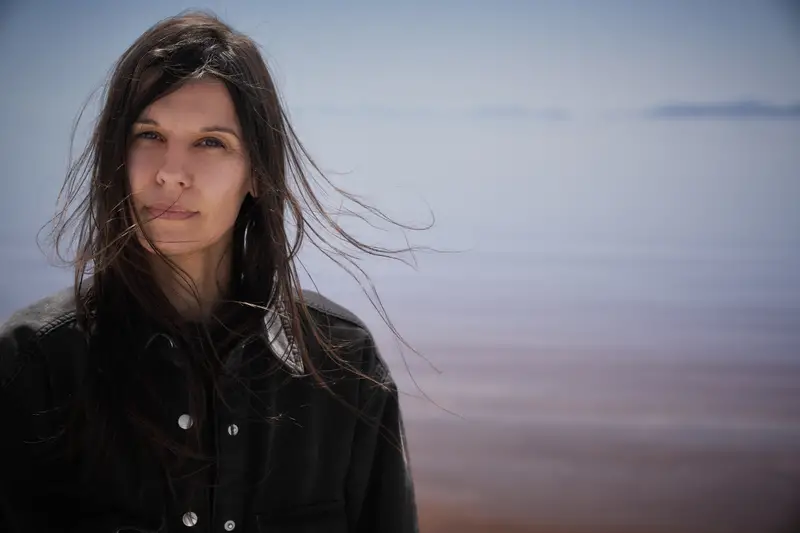
This exhibition is generously supported by the Henry Moore Foundation. MCA Denver also thanks the citizens of the Scientific and Cultural Facilities District for their support of the exhibition.
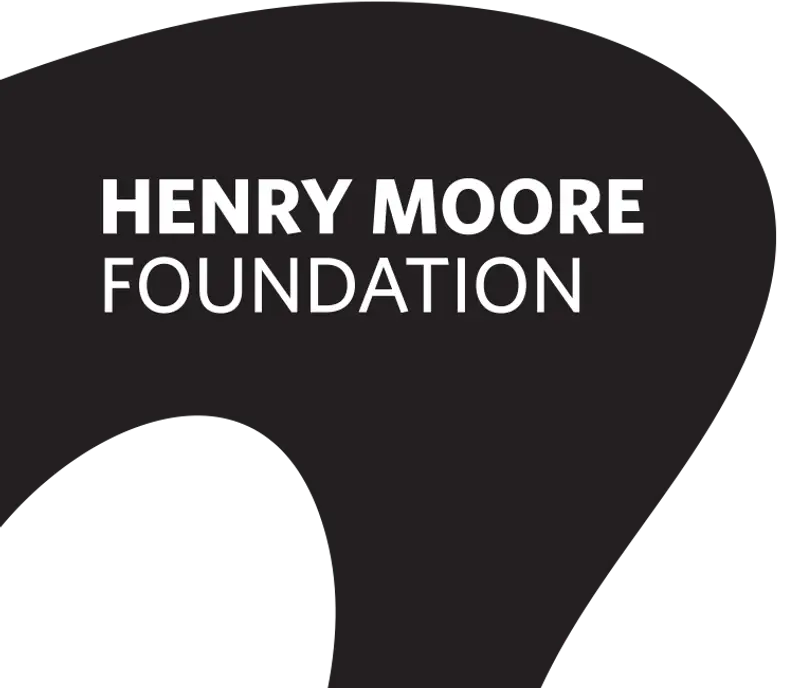
Installation Images
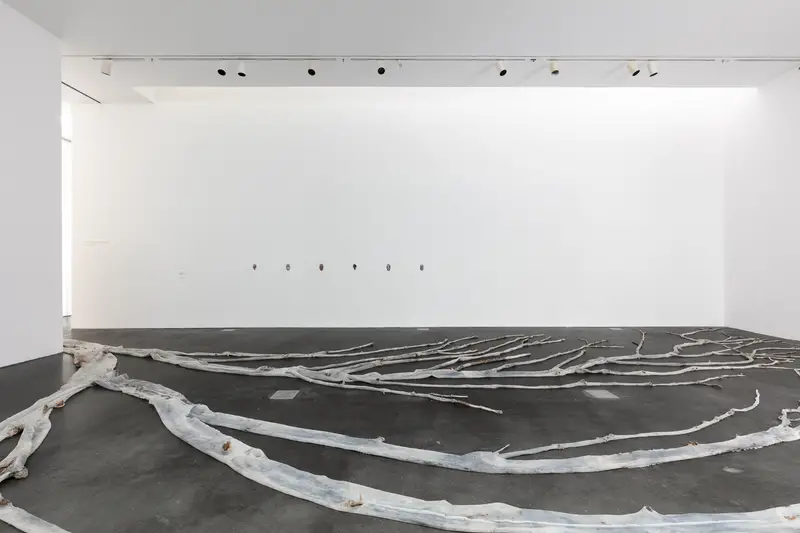
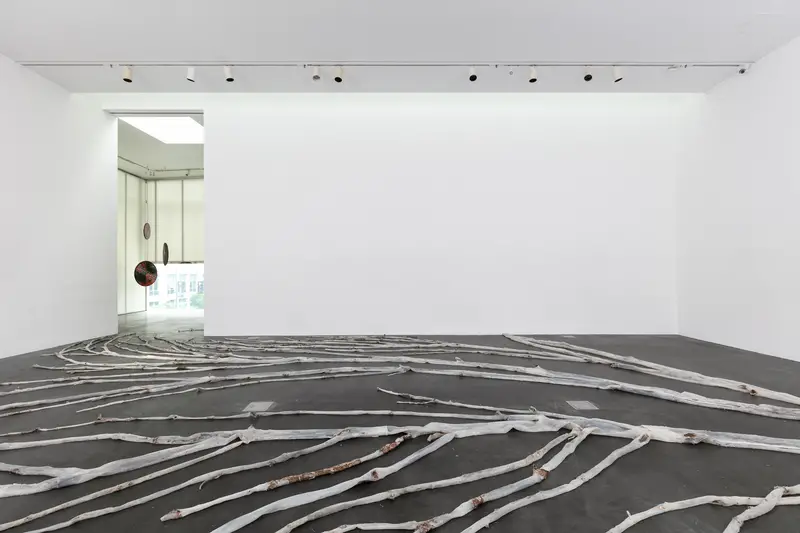
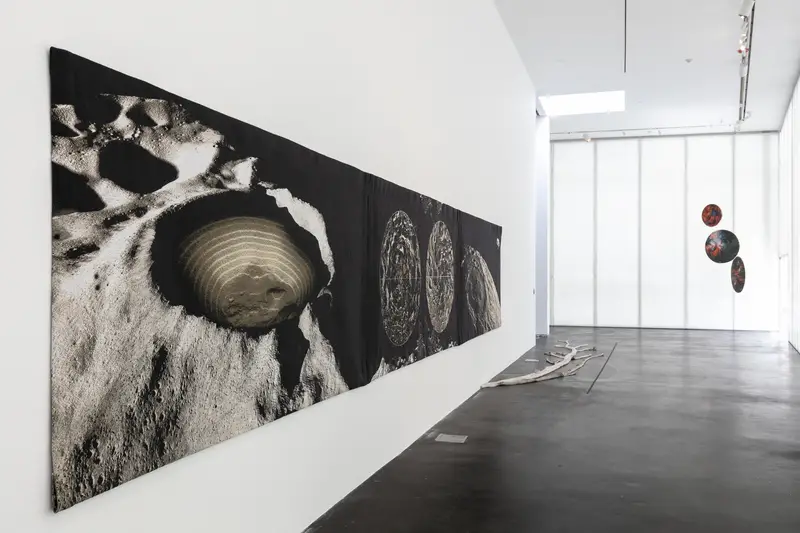
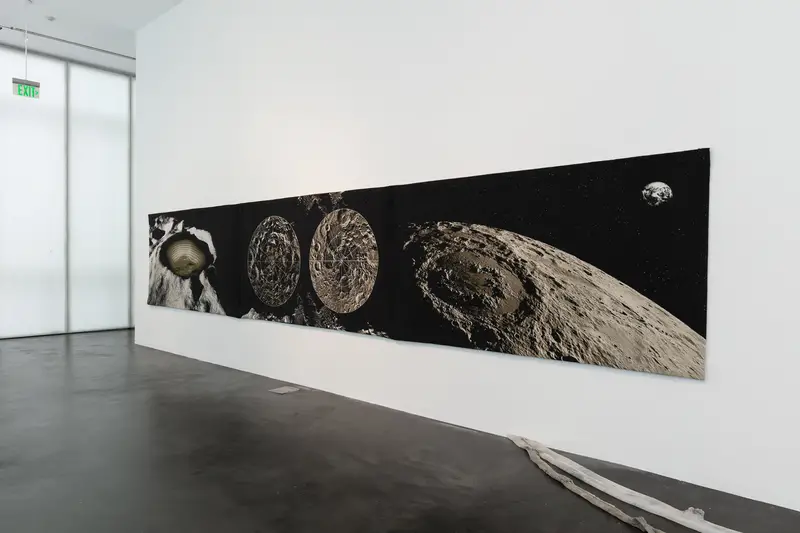
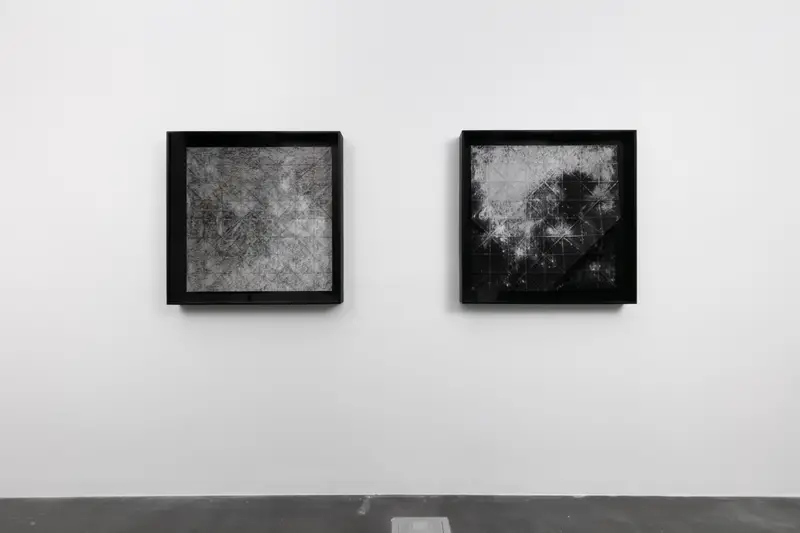
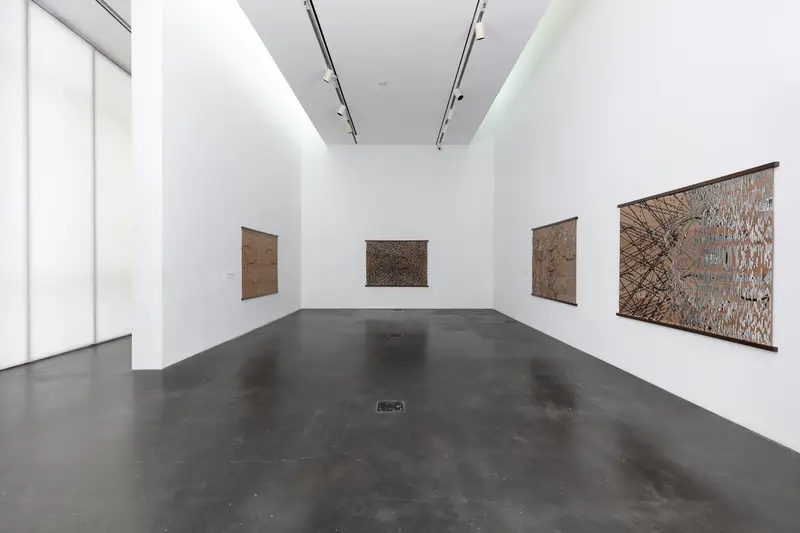
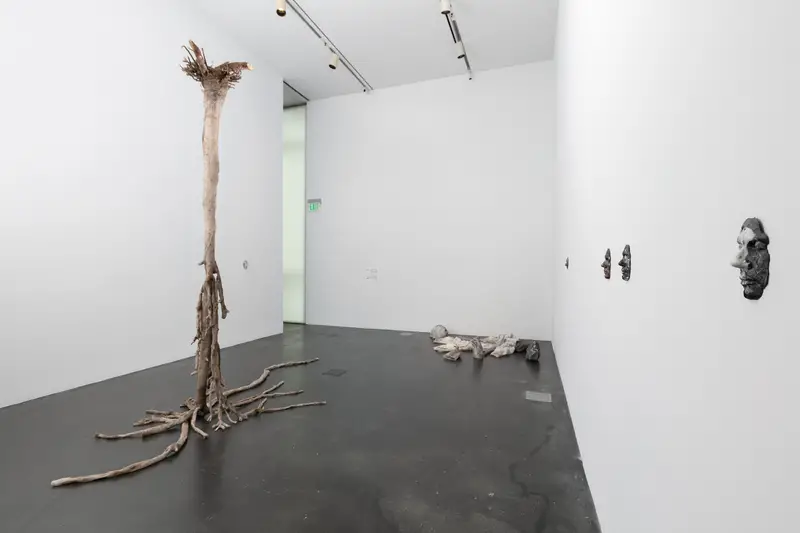

Installation views, Clarissa Tossin: Falling from Earth, Museum of Contemporary Art Denver, June 3–August 26, 2022. Photos By Wes Magyar.
